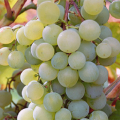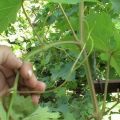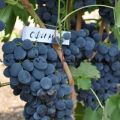Description of the Zinfandel (Primitivo) grape variety, characteristics of yield and frost resistance
The vigorous plant has established itself with excellent yield and ease of maintenance. Zinfandel grapes are capable of growing in various climatic conditions. In hot climates, the berries ripen remarkably, and often grape stepchildren delight with a second harvest. The variety is widely used for the production of a variety of wines. There are vineyards in California that have been producing abundant Zinfandel berries for over 80 years.
A bit of history
In 1820, Gibbs, an amateur gardener, ordered several types of vines from the Schönbrunn Imperial Garden, among which was a prolific black variety from Hungary. The gardener had high hopes for this variety. After the death of Gibbs, William Robert Prince began selling Zinfandel vines in his nursery in 1832.
In 1850, the variety gained popularity as a red wine. After 12 years the product was tasted by the French winemaker Foret, who highly appreciated the drink. Since then, Zinfandel has spread throughout California.
What is this variety?
In the 1960s, the phytopathologist Goin saw similarities between Zinfandel and the Primitivo grape in Apulia. In the 70s, the identity of the varieties was proved using isozyme analysis.
Thanks to this, Apulian producers, taking advantage of the popularity of their overseas counterpart, began to label Primitivo wine for export as Zinfandel.
Through research, it has been proven that clones of the same variety are:
- the American Zinfandel;
- Italian Primitivo;
- Croatian Crljenak.
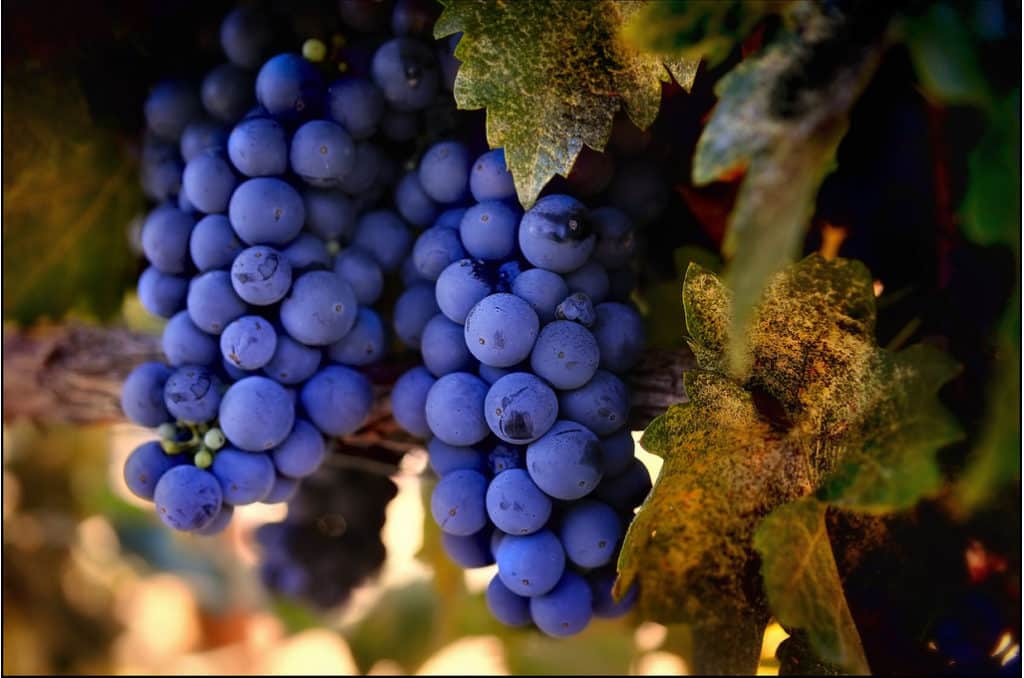
Wine is produced from grapes:
- dry;
- sweet;
- white Zinfandel.
Wines made from berries that grow on vines at least 50 years old are valued for their richness and intensity of taste and are considered standard.
Distinctive characteristics
The main characteristics of the variety:
- has high vines growth vigor;
- leaves are medium, five-lobed, deeply cut;
- large clusters are conical;
- berries are dark purple, small;
- fruits ripen unevenly;
- endowed with extreme sugar accumulation;
- high-yielding;
- late ripening;
- resistant to powdery mildew and mildew;
- unpretentious to soil.

Wine from Zinfandel is varied in taste, ranging from light fruity to complex, as well as sweet, like a port.The peel of the berries is covered with a waxy bloom, due to which the crop is well stored and does not crack at high humidity.
What are the pros and cons?
The disadvantages include:
- Berries often ripen unevenly.
- Requires a lot of sun.
- The bunches are very dense, which leads to crop rot. To avoid decay, the plantings are regularly inspected and damaged specimens are promptly removed.
Advantages:
- high productivity;
- intense accumulation of sugar;
- high taste;
- unpretentiousness to climatic conditions;
- the berries produce wine with a high alcohol content.
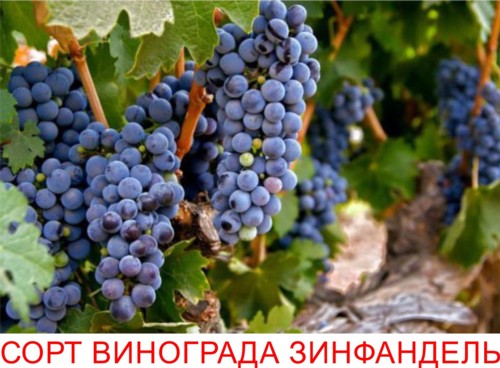
During the season, the bush gives about 10 kilograms of fruit, subject to proper care.
Selection and timing of planting seedlings
The plant is planted after the frost has passed - around the beginning of May. For planting, choose strong seedlings without damage.
How to plant Zinfandel grapes
It is not necessary to feed the soil before planting. But in fertilized soil, the vine will grow better and give a bountiful harvest. The drugs are used in dosage. In different years, the plant needs various organic and mineral substances.

A seedling is placed in the prepared hole, then sprinkled with soil and watered abundantly. The area around the plant can be mulched.
Growing and grooming tips
To obtain a bountiful harvest, the plant is provided with competent care:
- Regular pruning. If you ignore the planned pruning, the fruits will become small, and as a result, the plant will run wild. In severe winters, pruning is done in the spring.
- They carry out preventive measures against pests. Until the buds swell, they are treated with copper sulfate, then two weeks later and in the middle of summer with fungicides. In winter, it is recommended to treat it with iron vitriol.
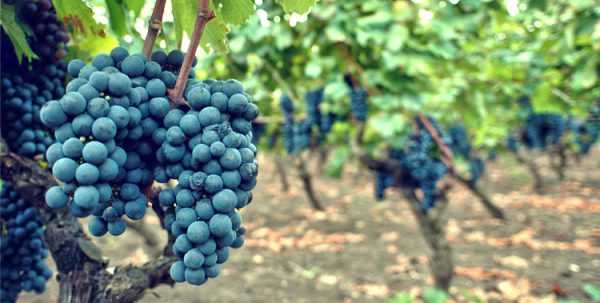
Due to its unpretentiousness to soil fertility and climate conditions with minimal maintenance, the plant pleases gardeners with a bountiful harvest.
Diseases and pests
The variety has medium resistance to:
- Oidium. The disease damages inflorescences and berries. The fight is carried out using contact drugs.
- Mildew. The disease causes great damage to the plant. Damages the green part of the crop and crops.
Possible pests:
- Felt mite. The development and spread of the insect is facilitated by dry and hot weather.
- Wasps. When the berries ripen, wasps can destroy the crop in a few days. Therefore, the destruction of insects begins before the ripening of the grapes.
To preserve the harvest, preventive measures are taken against pests and diseases.



